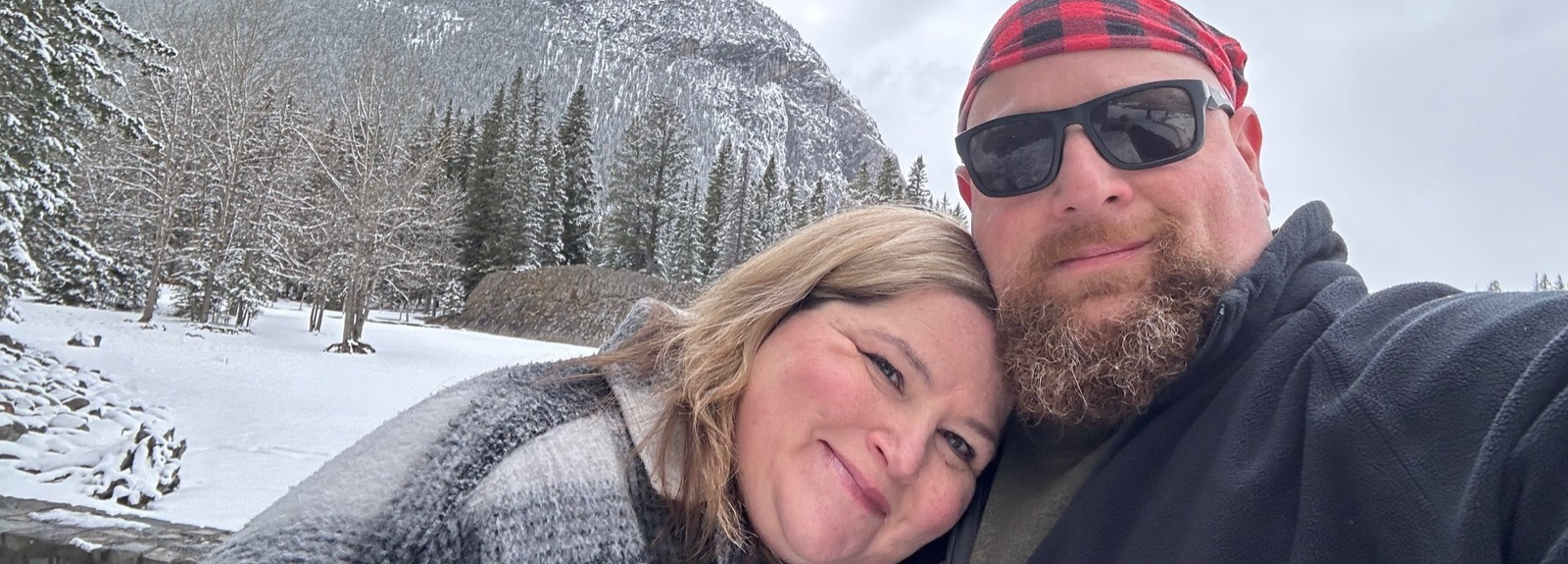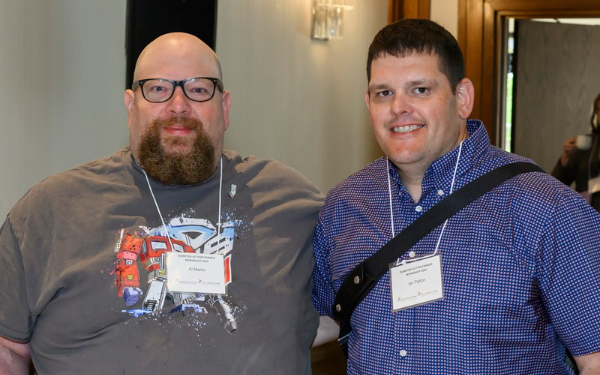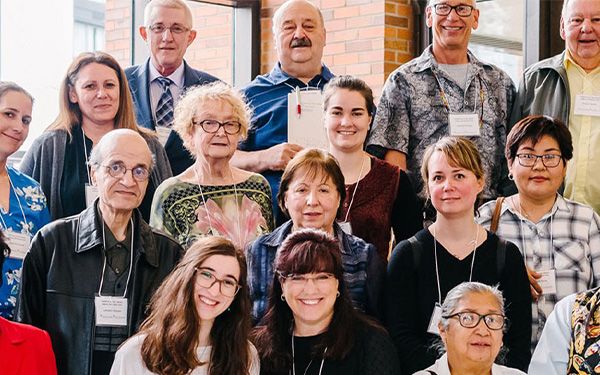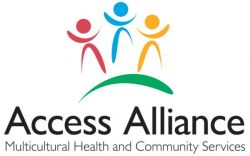
From Broken Welds to Healing Hearts: My Journey at the DAC Workshop


From Broken Welds to Healing Hearts: My Journey at the DAC Workshop
By kristalamb | Posted date: July 02, 2024 |
Written by Al Martin
Several of our Patient Partners provided blog posts about their experience of the recent Diabetes Action Canada Workshop. We’re excited to share them with our community. Here is the first in the series, from Patient Partner and Research to Action Fellowship award winner, Al Martin.
About Al: My current vocation is as a heavy haul trucker. As a husband and father of two teenagers, I have a busy life, but I also enjoy riding my motorcycle, writing, and studying science. Recently, I’ve taken on a role as an advocate and patient partner with DAC and Obesity Canada to help all people whose lives are touched by disease and medical issues. My aim is to support those in the industry, celebrate what’s great, fix what isn’t quite right, and build something new where needed. My passion is to champion the need for the ubiquitous inclusion of mental health in all healthcare. My wife and I both live with type 2 diabetes and obesity. We’ve also experienced the impact of these conditions with our fathers – we have “loved” experience in addition to our own lived experiences; mine passed in January 2023, and hers is still going strong in his 80s.

My float has a broken weld, which probably had a hidden crack for a couple of weeks. Today, it gave in to the daily toil of moving massive objects great distances. We found the issue, chained it up, and headed back to the shop for repairs. That’s how my day started on the first day of the conference. As much as I dislike bad analogies, sometimes we want to take a picture while holding a potato.
My body has been working hard for a long time and has needed a few trips to the shop for repair. Surgery two weeks before the conference was a bit of a surprise. The broken weld led to me finishing early, so off I rode to the conference, checking into a downtown Toronto hotel. My old hometown seems a bit surreal; no bellhops and concierge exist in heavy trucking, you’re a one-person crew. Solitude is the greatest thing—except when you need help.
I located our group. The room was full, and I knew only one of these people. They were mid-conversation. I wasn’t sure what was going on for about 35 seconds, but my brain churned as I heard the words of these great humans. It was obvious I was now immersed in the spirit of my people; patient advocacy was literally shooting out of them like firehoses. The talking stick couldn’t move quickly enough, and Linxi was bounding across the room to facilitate every single person’s interaction.
I was thinking fast and hard about the words I was hearing. I missed an important conversation and lesson from a couple of hours ago, but I knew the truths spoken were heartfelt because they overlapped with mine so many times. These are my people. They are passionate, tremendously engaged advocates who know the truth, hurt, and pain of being on the wrong end of good intentions inadequately backed and the daily machinations of the disillusioned. But in this room is a quiet power—the millions of hours collectively spent toiling at the millstone of chronic disease, caregiving, care receiving, and unrelenting pressure.
Day one, the passion was seething, but the lid was about to come off. I had the great pleasure of meeting Matt, my partner in the Fellowship Programme, who will work with me on “something awesome.” I met and got to know a few people. After supper, we exited for the pub and the Oilers game. Stories were told!
Some friends from other advocacy groups and research partners were there. I was humbled by the number of people who have dedicated their time to helping us and the chance to share my stories.
Day Deux
I was overwhelmed in the first five minutes when I realized how many people were presenting on the myriad of work done, along with the huge number of patient partners working on this. I officially met my colleagues in the Fellowship, sharing pleasantries after only knowing “of each other’s existence” and then the old Zoom call where my hands, more adept at shifting gears and chaining machines, were trying desperately to see my fellow fellows on tiny 1cm² blocks on my phone, nearly always hitting the wrong button.
“How did I get chosen? What can I offer?” It was humbling and difficult to hear that my life experiences were worth considering over anyone else’s. Perhaps my greatest fear is that I won’t have what it takes to rise to the level of my peers, many of whom have a solid background in academia. I’m an ACMZ driver but also a BMF, so I’m going to lay’er down best I can.
As usual, the presentations were inspired and hopeful, and the conversation outside the event was where the real work happened! There were a number of artful presentations in terms of visual arts.
I’d like to highlight every human I interacted with because I felt the love and respect from each and every one of them. A few standouts are Matt Langer, who will be my partner in the Fellowship project. Matt’s story involves a struggle with addiction, mental health, and homelessness. My own experiences intersect hard with his; addiction and mental health have affected my life since childhood, as my own father, also a diabetic patient, passed in January 2023 from undetected pancreatic cancer and other tumors. Matt worked on and was in the movie “Low.” The scene where a man suffers from a diabetic coma reminds me of when my wife and I checked on my father years ago when he let his sugars go unchecked and passed out. My wife, who lives with diabetes along with her own father, recognized the issue immediately while others assumed he was drunk. We got him to the hospital after getting him to drink some sugar-containing beverages. The fear and sadness of that experience flood back into me. I feel like I’ve been smacked by a bear trap binder right in the eye.
This movie, combined with the art and written exhibits outside, reminds me of the food “desert” I see in the trucking industry. Longer trips mean garbage food if I can’t get stopped near a grocery store. The resonance with foods available to the homeless is striking and needs thorough evaluation by society. Diabetics are not the only people in need of secure, reliable access to nutritive sustenance.
Another powerful experience was with Jasmine Maghera’s haunting images. Her painterly skill with composition, color, and texture brought me back to decades ago when I studied art in high school. One can’t help but be carried to the depths of a life punctuated by traumas and rebuilt strengths while locked with the images she’s painted and shared so beautifully with us. Anyone who’s lived or loved someone with trauma will be holding back tears in the presence of her work.
We were also treated to hear the stories of several Indigenous people who came to share and teach us about living with diabetes in communities that have been forgotten by many of us. My view of Indigenous people as a child was one of great respect for them, their lives in touch with the land, and their appreciation for our ancestors and our earth that sustains us. It breaks my heart to see and know how terrible their circumstances have been and how little care there has been for them. While I’ve lived my life somewhat distanced from their experiences, I feel great sorrow and grief over what they’ve endured. But I’m encouraged by their strength, courage, and determination to heal and spread love and kindness to all of us. The emphasis on building a relationship going forward while acknowledging and respecting the trauma of their past and present is truly important and impressive. It’s long past time to heal.
If those who have suffered mental illness, addiction, and lack of clean water and healthcare can heal and build a better system, I sure can too! It’s time to harness the spirit of these amazing humans. Their hearts and minds are powerful, and knowledge abounds. Respect for our earth and ourselves is evident in every word from the Indigenous people I met. Tamara, who ran to Winnipeg from the Cree Nation (look up proper spellings of names), is an inspiration for all of humanity.
I also want to shout out to Ryan, who lost his sight 12 years ago and has shown me things I have never been able to see with my working eyes. I only had a couple of short interactions with him, but his presence is very powerful because he’s showing us that obstacles can be navigated or blown away by simple advocacy and words to explain a better way to communicate.
As I packed up and grabbed my motorcycle from the garage, I arrived at the valet parking circle, found a place to pull my bike up, and got my bags. The bellhops had gone to get my old leather duffle and my two other ramshackle bags—what I carry in my tractor, what I strap to my bike. I thought of Katie, who checked out with me and talked to me several times. She’s a PhD candidate working in the field of her own chronic disease since the age of 3. An example of extreme professionalism, dressed in a pink blazer with a matching wheelie suitcase, she’s got the look my stylist fell flat on! But she’s got substance too—a kind soul, smart, and perhaps unaware of how much she embodies what we need to know. I think I chewed her ear off the last day with my rambling, but she showed me how to roll with it, be seen living life undeterred, and make a difference.
Back to my bike, strapping down bags, my boss called to discuss a difficult job for Monday morning. A 05:00 start—they wanted me to keep in touch and had already had one successful day on the project. I’m proud they trust me with this.
I’m also proud of my involvement with DAC and all the people I’ve mentioned above, and all the ones I didn’t. I wish I’d had time to share every conversation, like the ones I had with Kathleen, Heather, Jamie, and Ian.
Thankfully, though, my loquacious nature knows some bounds. When I’ve said everything I need to say, I simply go on for another hour…
I’ve got to say that was an awesome experience. I’m both exhausted and pumped, humbled and proud. Watch out, November is coming fast!
Related Webinars
Associated Programs


